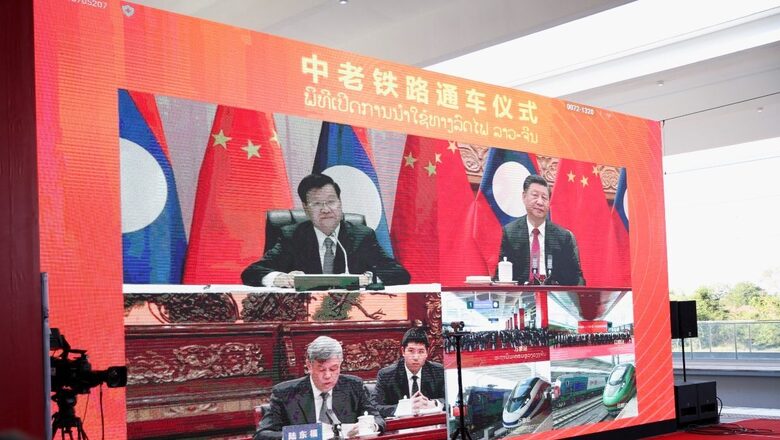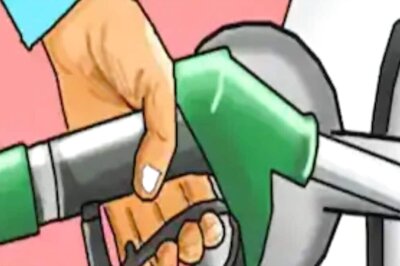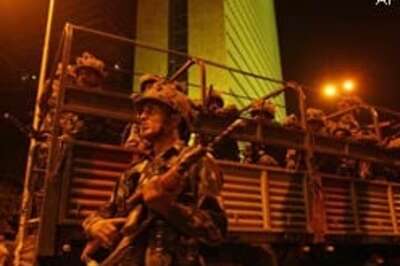
views
Another South Asian country has plunged into a vicious debt trap, courtesy China! Laos, a small country having around 7.5 million population, is currently facing a severe debt crisis, bringing it to the verge of default. The country’s total debt has reached approximately $14 billion, surpassing 100 per cent of its GDP. This crisis is worsened by a decline in foreign currency reserves, which stood at $1.85 billion at the end of March.
Additionally, the nation’s annual inflation rate has hit a 22-year high of 23.6 per cent, driven by significant increases in oil and consumer prices, including medicines and essential food items, making daily life increasingly difficult for Laotians. Of particular concern is the doubling of Laos’ external debt within a year to $10.5 billion, with more than half owed to China for its Belt and Road Initiative (BRI) investments. The root cause of Laos’ unprecedented economic difficulties is clearly over-borrowing. Now it is seeking to defer debts with key creditors to gain more time for repayments. This situation raises the question: Has Laos’ debt crisis been triggered by China’s ‘Debt Trap’ diplomacy?
Since joining the ambitious Belt and Road Initiative (BRI) in 2015, Laos has seen the completion of the $6 billion Laos-China high-speed railway, connecting its capital Vientiane to Kunming in China. This line was opened in 2021. This railway project stands as Vientiane’s largest infrastructural project. This dream was sold to Laos by saying that it would transform Laos from a “landlocked to a land-linked country.”
However, the project has primarily benefited China in trade, contrary to the economic advantages anticipated for Laotians. Boten, a Laotian town near the Chinese border, was designated as a Special Economic Zone (SEZ) in 2003, attracting significant Chinese investment of $10 billion alongside other BRI projects in Laos. The town drew a considerable number of Chinese nationals, including investors, who established many hotels and casinos, leading to illegal activities such as prostitution, gambling, and drug trafficking. Although the Laotian government shut down many Chinese casinos, it continued to allow full business ownership for foreign investors in Boten, resulting in a continued influx of Chinese investors. Consequently, businesses in Boten are predominantly owned and operated by Chinese nationals.
Another example is the construction of eighty hydropower plants on the Mekong River by Chinese companies. Laos was lured into these projects by China which claimed that these projects would transform Laos into the “powerhouse of Southeast Asia”. But they were a major instrument of pushing Laos into the debt trap. These projects raised concerns particularly after the state-owned power company Electricite du Laos (EdL) signed a 25-year concession agreement with China Southern Power Grid (CSPG) in 2021, granting CSPG a majority stake in building and managing the country’s power grid and control over electricity exports to neighbouring countries. Vientiane has yet to generate any revenue from these hydropower projects.
Laos’ economic crisis has been unfolding since the Covid pandemic. Previously, Beijing had provided temporary relief by deferring debt repayments amounting to about $2 billion (over 15 per cent of Vientiane’s GDP) from 2020 to 2023. However, this measure failed to alleviate Laos’ economic difficulties. The unsustainable borrowing in the form of Chinese loans persisted despite growing debt concerns. All this culminated in a major economic crisis Laos is not an isolated case; a closer examination of South Asian countries reveals similar patterns, as China’s ‘debt-trap’ strategy has been affecting these nations for some time.
Sri Lanka in Chinese debt trap
Sri Lanka’s situation perhaps most clearly mirrors Laos’ current predicament. Just two years ago, the island nation experienced its worst economic crisis. Colombo had declared bankruptcy with a debt suspension of approximately $83 billion. Colombo owed 52 per cent of its $40 billion external debt to China. The $1.3 billion Hambantota International Port, a flagship project of China’s BRI, incurred substantial losses due to a lack of commercial feasibility. Consequently, Sri Lanka defaulted on its debt to China, leading to a 99-year lease of the port and 1,500 acres of surrounding land, equating to a 70 per cent stake, in a $1.1 billion deal signed in 2017.
Beyond Hambantota, the majority of Chinese-backed projects in Sri Lanka, totalling over $12 billion in loans, proved to be underperforming, becoming the proverbial “white elephant” under the BRI. Following Sri Lanka’s debt default, China declined to provide debt relief, instead offering only extensions on interest payments. There was no relief from the Chinese debt trap even after Sri Lanka secured a $2.9 billion IMF (International Monetary Fund) bailout package. Although China agreed to support Sri Lanka’s debt restructuring plan, it opted to negotiate separately. By of 2022, Sri Lanka still owed approximately 20 per cent of its external debt to China. Additionally, last year, Colombo entered into a $4.5 billion agreement with the Chinese state-owned oil company Sinopec, granting China access to Sri Lanka’s domestic fuel market and raising concerns about a potential monopoly in the already economically vulnerable market.
Chinese debt and Bangladesh’s economic crisis
Chinese investment surged in Bangladesh after Dhaka joined the BRI in 2016. Last year alone, Beijing invested around $800 million, becoming not only Bangladesh’s leading bilateral creditor but also the top foreign direct investor. China’s credit flow surpassed $1 billion over the past two financial years, accounting for 10 per cent of Dhaka’s annual borrowings.
However, the short repayment terms of Chinese loans entail higher instalment amounts, making overall repayment burdensome. This is particularly concerning given the recent challenges faced by Dhaka’s economy, with inflation reaching a 12-year high of approximately 9.72 per cent in June, foreign reserves dropping to $20.46 billion, and an annual currency depreciation of 26 per cent. The increase in Chinese investment has also led to a rise in Dhaka’s external debt. Additionally, the disbursement of Chinese loans for BRI projects has been very slow, with delays in loan approval causing significant cost inflation in Dhaka. Furthermore, about 59 per cent of Beijing-backed projects in Bangladesh are reportedly posing Environmental, Social, and Governance (ESG) risks.
China’s BRI and Pakistan
Pakistan, another struggling economy, anticipated a turnaround when it signed the China-Pakistan Economic Corridor (CPEC) agreement in 2015. Touted as a flagship BRI project, CPEC aims for completion by 2030. However, Islamabad’s economic instability is evident in its trade deficit with its largest creditor, China, along with a decline in foreign direct investment, macroeconomic instability, and a power shortage crisis. Islamabad owes $30 billion to China, while CPEC projects continue to be targeted by separatist groups, casting doubt on Pakistan’s ability to overcome its economic challenges.
China targets Myanmar
Meanwhile, Myanmar, plagued by a coup and civil war since 2021, is another region targeted by China for its BRI project, specifically the China-Myanmar Economic Corridor (CMEC), due to its geostrategic location. As of 2020, China held 40 per cent of Myanmar’s $10 billion debt, a figure expected to increase following the 2021 coup, leaving the military government heavily dependent on Beijing’s support. The reality is that Myanmar is on the brink of default and may be compelled to transfer ownership of critical infrastructure to China if it continues borrowing in this manner.
Conclusion
Laos’ economic crisis should serve as a warning for the South Asian countries to reassess their economic policies and protect themselves from China’s debt trap. Many countries in Africa and Latin America are also bearing the brunt of the Chinese debt trap. The mainstay of this debt trap is the Belt and Road Initiative. Thus, the sooner member countries of BRI get out of it, the better they will be on the economic front.
The writer is an author and columnist and has written several books. His X handle is @ArunAnandLive. Views expressed in the above piece are personal and solely those of the author. They do not necessarily reflect News18’s views.



















Comments
0 comment